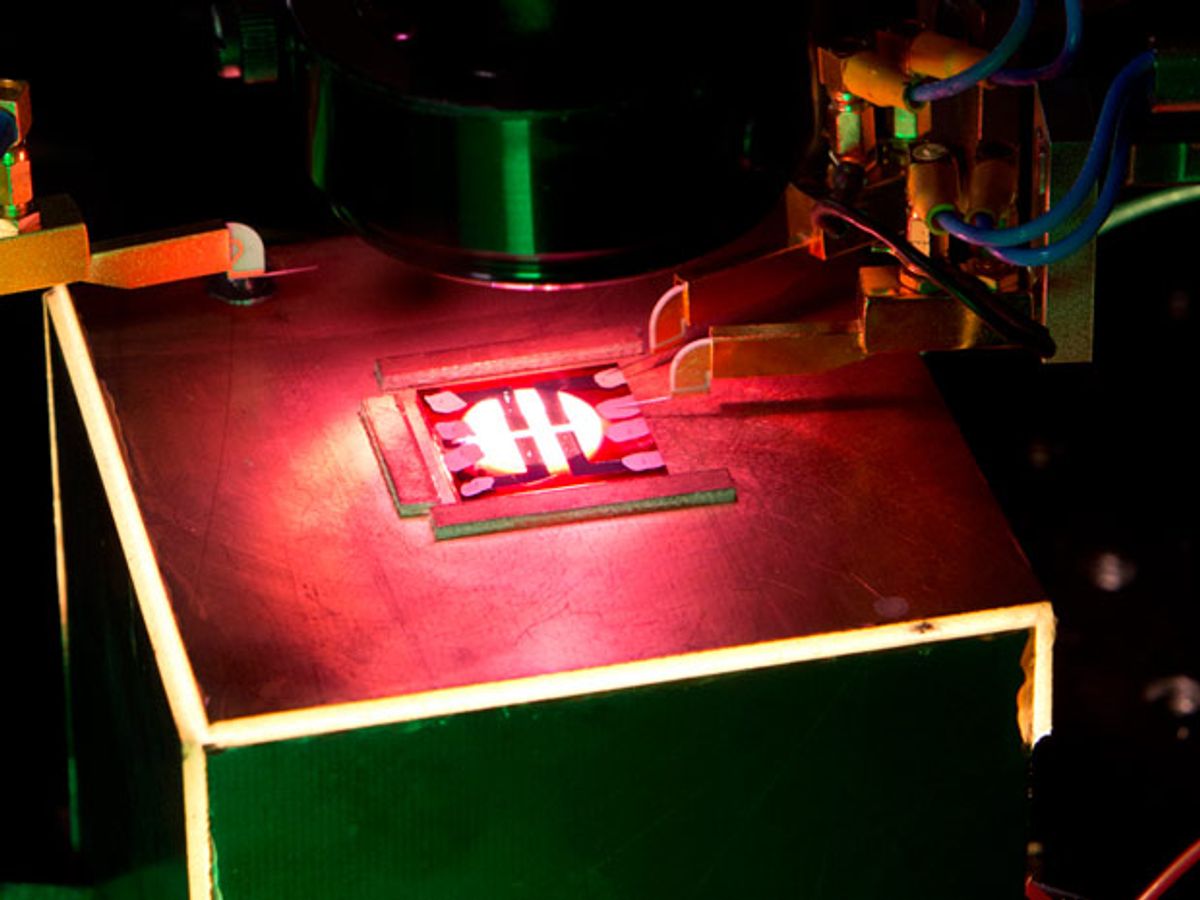Although organic photovoltaic cells are less efficient than silicon-based ones, experts expect their to one day be a big market for them. That’s because they are cheap to manufacture, flexible, and light-weight. However, there is a big obstacle to their wide-scale use: their lifetime is limited by oxygen and by ultraviolet radiation.
There’s hope, according to Monica Lira-Cantu, an engineer investigating organic solar photovoltaics at the Catelan Institute of Nanoscience and Nanotechnology in Bellaterra, Spain. She was one of the three organizers of ISOS-7 International Summit on OPV Stability (ISOS) held in Barcelona, on 6-8 October.
"The technology controlling the stability of organic solar cells is really advancing; they are getting more stable each year, and that is what we need to reach the market, " she says. Niche markets might open up earlier: "The application of organic solar cells for short-term applications is clear, such as mobile applications or military applications," she says.
Determining the lifetime of an organic photovoltaic cell has been fraught with difficulties from the beginning of OPV research. "ISOS 1 was started in 2008 when competing companies got together and said, 'OK we have to do something about organic solar lifetimes because researchers from industry are publishing values all over the place' ," says Moritz Riede, a physicist at the University of Oxford , and also organizer of the summit. "We wanted to make sure that solar cells are being measured under comparable conditions, and that the lifetimes that are cited can stand up to scrutiny," says Riede.
In response, ISOS developed measurement protocols, such as specifications for climate chambers and for certified light sources. "These are not yet international standards, but they are recommendations, so people know better under which circumstances the lifetime of a photovoltaic cell was obtained," says Riede.
Another complication is that the definition of "lifetime" can vary. Usually it is defined as the time it takes for a decrease of the initial efficiency to 80 percent, but there is a less common definition, used by the International Electrotechnical Commission that allows cells to degrade only by 10 percent.
Further, the proliferation of a huge number of organic PV cells is complicating things further. "There is no 'the organic solar cell;' there are thousands of compounds and even millions of ways you can combine the compounds into solar cells," says Riede. Even with identical materials, you can obtain different results depending on which electrodes you use. With some test conditions the efficiency may even increase for the first 1000 hours, and then slowly degrade, he says.
Notwithstanding all these complexities, Riede and Lira-Cantu identified some notable progress:
- Solliance showed 7000 hours of damp-heat stability (85°C, 85 percent relative humidity) for fully flexible organic solar modules with barrier technology developed at the Holst Centre and device technology of one of their partners.
- Heliatek showed over 22,000 hours light stability (under a halogen light) on a high performance 2.3-meter-long organic solar module encapsulated in glass and built on from its fabrication line.
- Solar modules from Chose reported efficiencies of 7-13 percent depending on the device structure and detailed a one or two step process for perovskite deposition.
- TU Dresden showed improved stress resistance and enhanced performance of flexible barriers by combining atomic layer deposition with molecular layer deposition.
Most of the talks will be made available online at the ISOS website.



